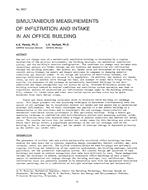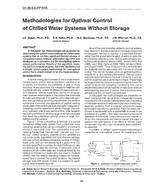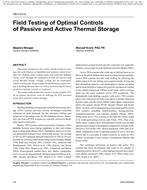The aim of this paper is to show how the number and positioning of boreholes for a given land surface area can affect the fluid and ground temperature variations and the required borehole length. The methodology uses a g-function generation model and then uses temporal superposition to predict the variation of the fluid and borehole wall temperatures over 20 years of operation of the ground-source heat pump system. The cases of a 3 x 7 and 5 x 10 bore field are studied. Results show that the position of boreholes within a bore field of constant land area affects only slightly the required borehole length, while the number of boreholes has a greater, albeit small, impact on the required length. For instance, for the 5 x 10 bore field, the total required borehole length increases by 0.9% when boreholes are displaced towards the center and decreases by 2% when the field was changed to a 5 x 9 configuration. In the latter case, the length of individual boreholes increased by 8.8%.
Citation: ASHRAE Transactions – Volume 120, Part 2, Seattle, WA
Product Details
- Published:
- 2014
- Number of Pages:
- 16
- File Size:
- 1 file , 3.9 MB
- Product Code(s):
- D-SE-14-013


